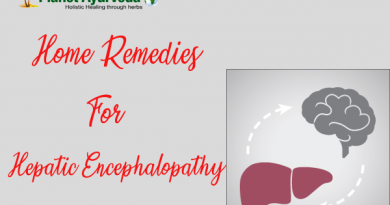Soothe Throat Pain Naturally – Effective Odynophagia Management with Ayurveda
Abstract
Eating is one of the most fundamental human activities, yet it involves a highly coordinated and complex process. Swallowing (deglutition) is not a simple act of moving food from the mouth to the stomach- it requires the synchronized action of muscles, nerves, and protective reflexes. This complex mechanism usually goes unnoticed until it becomes difficult or painful. When pain accompanies swallowing, the condition is termed Odynophagia. Unlike simple discomfort, odynophagia often indicates irritation, inflammation, or obstruction within the throat or esophagus. This not only disrupts the enjoyment of eating but can also compromise nutrition, hydration, and overall quality of life. From the Ayurvedic point of view, it is an Urdhawa Jatrugata Roga (Diseases of the region above the clavicle).
Introduction
The word odynophagia comes from the Greek roots odyno (meaning pain) and phagein (meaning to eat), and it describes the condition of experiencing pain while swallowing. Odynophagia is painful deglutition caused by inflammatory lesions in the oropharynx or supraglottis. It is a symptom rather than a disease itself and indicates irritation, inflammation, or injury in the throat (pharynx), esophagus (food pipe), or surrounding structures. Individuals with odynophagia often experience sharp, burning, or stabbing pain while swallowing food, liquids, or even saliva. Occasional odynophagia may occur during a common cold or sore throat, but persistent pain could indicate underlying issues such as GERD, oral thrush, or, in rare cases, cancer. It is important to note that odynophagia differs from dysphagia (difficulty swallowing), although both can occur together. In some cases, individuals may also experience globus sensation, a feeling that something is stuck in the throat despite nothing being present.

Types of Odynophagia
Odynophagia can be classified into three main types-
- Ulcerative Odynophagia- It is characterised by the presence of ulcers with broad or flat margins in the oesophagus. It is the most common type.
- Hyperplastic Odynophagia- Due to exaggerated reaction, there is obliteration of oesophageal lumen.
- Granular Odynophagia- It is characterised by the presence of small, multiple military mucosal granulomas.
Causes
- Infections- Viral (Common cold, influenza), Bacterial (Streptococcal pharyngitis, tonsillitis, diphtheria), Fungal- Oral candidiasis (thrush).
- Inflammation- Pharyngitis, tonsillitis, esophagitis, or mucositis.
- Injury or Trauma- Swallowing sharp foods, burns from hot foods/drinks, or post-endoscopic procedures.
- Gastroesophageal Reflux Disease (GERD)- Acid reflux causing irritation and pain in the esophagus.
- Structural Disorders- Esophageal strictures, tumors, or webs causing obstruction.
- Neurological Disorders- Stroke, Parkinson’s disease, myasthenia gravis, or other conditions affecting swallowing coordination.
- Medications- Certain antibiotics, NSAIDs, bisphosphonates, or chemotherapy drugs that irritate the esophagus.
- Autoimmune Diseases- Sjögren’s syndrome, Behçet’s disease, or other conditions affecting mucosal tissues.
Symptoms
Symptoms of painful swallowing can vary depending on the cause. Common signs include:
- A burning or sharp sensation while swallowing.
- Feeling of a lump or obstruction in the throat.
- Difficulty swallowing or inability to swallow properly.
- Pain triggered or worsened by certain foods or drinks, such as hot, spicy, or acidic items.
- Excessive saliva or drooling.
- Regurgitation or vomiting.
- Heartburn due to acid reflux.
- Unintended weight loss in severe or chronic cases.
- Other accompanying symptoms may include fever, throat soreness, or breathing difficulties, which can help indicate the underlying cause.
Diagnosis
- Physical Exam- Check throat, mouth, and neck for inflammation or lesions.
- Endoscopy- Visual inspection of the esophagus and stomach using a flexible camera.
- Barium Swallow- X-rays with contrast to detect blockages or structural issues.
- Esophageal Manometry- Measures esophageal pressure and movement.
- CT/MRI- Imaging of neck and chest for deeper abnormalities.
- Lab Tests- Blood tests or cultures to detect infections or underlying conditions.
Treatment
Treatment depends upon the cause
- For acid reflux or esophagitis- Proton Pump Inhibitors (Pantoprazole, Omeprazole, Esomeprazole) or H2 blockers (Ranitidine, Famotidine) are prescribed.
- For infections- Antibiotics (Amoxicillin, Azithromycin), antivirals (Acyclovir), or antifungals (Fluconazole, Itraconazole).
- For inflammation- Corticosteroids (Prednisolone, Dexamethasone).
- For pain- Topical anesthetics (Lidocaine viscous solution).
- Endoscopic dilation or surgical correction- For severe strictures or tumors.
- Supportive measures include a soft diet, hydration, and avoiding irritants like alcohol, caffeine, and smoking.
Ayurvedic overview
In Ayurveda, Odynophagia can be understood as a manifestation of Kanthashoola under Urdhva Jatrugata Roga, where Pitta-induced inflammation and Vata-induced pain combine, often with Kapha obstruction. Causative factors such as excessive intake of spicy, dry, or heavy food, exposure to dust or smoke, excessive talking, or suppression of natural urges can vitiate Vata, Pitta, and Kapha in the Urdhva Jatru region. Kapha dushti leads to sleshma sangraha (mucus accumulation, heaviness, obstruction). Pitta dushti causes daha (burning), shotha (inflammation), and ruk (pain). Vata dushti produces rukshata (dryness), shoola (sharp pain), and sangha (obstruction). These vitiated doshas lodge in the Kantha (throat) and Annavaha (Channels carrying food) & Pranavaha Srotas (Channels carrying air), leading to Kanthashoola (throat pain).
In Ayurveda, the management of Kanthashoola (throat pain) focuses on balancing aggravated Doshas and maintaining harmony in the Urdhva Jatrugata region. Unctuous remedies such as Yashtimadhu Ghrita and medicated oils are prescribed to ease discomfort, while herbs like Yashtimadhu, Amalaki, and Guduchi help soothe irritation and inflammation. To address congestion and feeling of obstruction, formulations including Trikatu Churna, Tulsi, and Haridra are recommended. Local therapies such as Triphala or Yashtimadhu decoction gargles, Gandusha (oil pulling), and Pratisarana with honey provide significant relief from pain and swelling. Among classical preparations, Khadiradi Vati, Sitopaladi Churna, and Talisadi Churna are highly beneficial.
Dietary Habits and Lifestyle Modifications:
- Follow diet- Soft, moist foods like mashed potatoes, oatmeal, khichdi, pureed fruits/vegetables like bananas, applesauce, pumpkin puree. High-protein soft foods like scrambled eggs, paneer are also beneficial. Warm liquids like herbal teas, broths, and warm milk with turmeric can be consumed.
- Avoid diet- Spicy, acidic, very hot, dry, or coarse foods (chips, toast, citrus) are to be avoided.
- Water intake- Sip lukewarm water frequently to keep the throat moist. Adequate hydration should be maintained.
- Yogasana- Vajrasana (Thunderbolt Pose), Supta Baddha Konasana (Reclined Bound Angle Pose), Ardha Matsyendrasana (Half Spinal Twist), Pawanmuktasana (Wind-Relieving Pose), Bhujangasana (Cobra Pose), Setu Bandhasana (Bridge Pose).
- Pranayama- Anulom Vilom (Alternate Nostril Breathing), Sheetali (Cooling Breath), Sheetkari (Hissing Cooling Breath) and Bhramari (Bee Breath).
- Physical exercise- Focus on improving strength and coordination of the swallowing muscles. Common techniques include the Shaker exercise (head lifts), Chin Tuck Against Resistance (CTAR), the effortful swallow, and the Masako maneuver (holding the tongue between the teeth while swallowing).
Herbal Remedies for Odynophagia by Planet Ayurveda
Planet Ayurveda is where ancient Ayurvedic wisdom meets modern wellness needs. With a strong belief in natural healing, we bring you pure, authentic herbal formulations crafted from time-tested Ayurvedic principles. Instead of masking symptoms, Planet Ayurveda focuses on addressing the root cause of health concerns, helping the body restore balance naturally. With Planet Ayurveda, you don’t just buy a product- you begin a journey towards a healthier, balanced, and more natural way of living.
For Odynophagia we have these medicines mentioned below:
- Acido Plan Syrup
- Digesto Plan Syrup
- Heart Burn Capsules
- Kamadudha Ras (Moti Yukt) Tablets
- Curcumin Capsules
Product Description
1. Acido Plan Syrup
This herbal syrup has key ingredients like Patola (Trichosanthes dioica), Sajjikshar (Sodium bicarbonate), Ghrit Kumari (Aloe barbadensis) etc. All of them combinedly pacifies Vata, Pitta and Kapha. This herbal syrup neutralises excess gastric acid soothing hyperacidity, protecting the lining of the throat and provides relief from the burning sensation in the throat.
Dosage– 2 tsp. twice daily.
2. Digesto Plan Syrup
This herbal syrup has key ingredients like Ajwain (Trachyspermum ammi), Sonth (Zingiber officinale) and Triphala (Amalaki, Bibhitaki and Haritaki). All these act synergically to balance all three doshas (Vata, Pitta and Kapha), removes flatulence, stimulates appetite and maintains overall gut health in patients of Odynophagia.
Dosage– 2 tsp. twice daily.
3. Heart Burn Capsules
These capsules are made by using key ingredients like Praval Pishti (Coral Calcium), Akik Pishti (Agate Calcium), Jahar Mohra Pishti, Kamdudha Ras and Giloy (Tinospora cordifolia). This unique blend works by regulating aggravated Pitta dosha, soothing the esophageal lining, reducing excessive acidity, and thereby providing relief.
Dosage– 1 twice daily. Open and mix with the syrup.
4. Kamadudha Ras (Moti Yukt) Tablets
These tablets are made from key ingredients like Mukta Bhasma (Pearl calyx), Shankh Bhasma (Conch shells calyx), Praval Bhasma (Coral calyx) and Varatika Bhasma (Cowries calyx). These pacify Pitta and Kapha dosha, primarily Pitta. These tablets act as a natural antacid, balances disturbed Agni (Digestive fire) and soothes inflammation. Due to its cooling effect, it allows the Ropana (Healing) of erosions and ulcers in the throat and esophagus in patients of Odynophagia.
Dosage– 1 tablet twice daily.
5. Curcumin Capsules
These capsules are made from potent Haridra extract (Curcuma longa). It pacifies Pitta and Kapha doshas, is anti-inflammatory in action, heals the irritated lining of the esophagus and is also useful in soothing hyperacidity. In Odynophagia due to viral or bacterial infections, these capsules work against them and relieve symptoms.
Dosage– 1 capsule twice daily.
Contact Planet Ayurveda Support Team to provide you the costing/ordering and delivery information at – costing.planetayurveda@gmail.com or Call at 0172-521-4030 (India), +91-172-521-4030 (Outside India) or Whatsapp at (+91) 9915-593-604.
Conclusion
Odynophagia is not merely a minor throat complaint but an important clinical symptom that can signal a wide spectrum of underlying conditions ranging from simple infections to structural or systemic disorders. Its impact extends beyond discomfort, often affecting nutrition, hydration, and overall quality of life. Modern medicine provides effective tools for diagnosis and treatment, while Ayurveda offers a holistic perspective, addressing the dosha imbalance responsible for throat pain under the category of Urdhva Jatrugata Roga (Diseases of region above clavicle). A combined approach involving timely medical evaluation, appropriate Ayurvedic formulations, local therapies, and lifestyle modifications can help relieve symptoms. Dietary care, yogic practices, and pranayama further support healing by enhancing throat health and strengthening the swallowing mechanism. Early recognition and integrated management of odynophagia are therefore essential for restoring comfort, maintaining nourishment, and improving the patient’s overall well-being.
Frequently Asked Questions (FAQ’s)
What is the difference between dysphagia and odynophagia?
- Dysphagia refers to difficulty in swallowing, where food or liquid feels stuck or hard to pass, while odynophagia means pain during swallowing, often felt in the mouth, throat, or chest.
Why do I feel pain when swallowing saliva?
- Pain while swallowing saliva is usually caused by throat irritation or inflammation from viral infections like cold or flu. Other triggers include strep throat, acid reflux, oral thrush, allergies, or smoke exposure. Persistent or severe pain should be evaluated by a doctor.
Why does my ear hurt when I swallow and how do I stop it?
- Ear pain while swallowing is often linked to throat or sinus infections, middle ear infections, Eustachian tube issues, or TMJ disorders, which cause nerve irritation or pressure.
How do I know if my Eustachian tube is blocked?
- A blocked Eustachian tube can cause ear pressure, fullness, muffled hearing, ringing, popping sounds, dizziness, or mild pain.
Why is there so much saliva in my mouth when my throat hurts?
- Excessive sudden salivation may result from irritation, infection, acid reflux, dental issues, or side effects of new medications.
What deficiency causes excess saliva?
- No single deficiency directly causes excess saliva, though vitamin B3 lack in pellagra may lead to it. More often, sialorrhea stems from neurological disorders, oral infections, acid reflux, or pregnancy.
What is gleeking?
- Gleeking is the sudden spray of saliva from the submandibular gland when the tongue presses on Wharton’s duct. It may occur unintentionally, like while yawning, or intentionally by building saliva and using tongue pressure.







